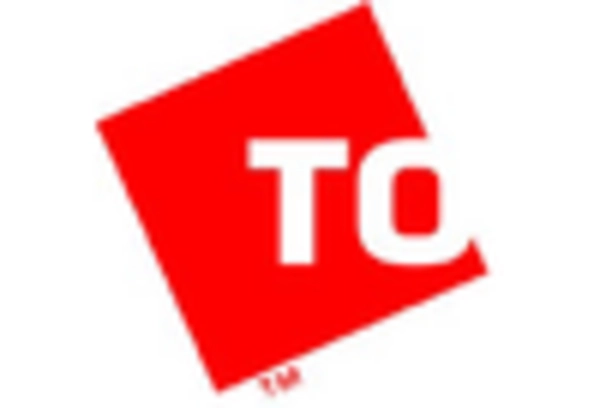Growth in Consumer Electronics
The consumer electronics sector in South Korea is witnessing rapid growth, which is positively influencing the IGBT market. With the increasing demand for high-performance electronic devices, manufacturers are seeking advanced power management solutions. IGBTs are essential in various consumer electronics, including televisions, computers, and home appliances, where they enhance energy efficiency and performance. The consumer electronics market is anticipated to grow at a CAGR of 5% through 2026, further propelling the need for IGBTs. As companies innovate and develop smarter devices, the reliance on IGBT technology is likely to increase, positioning the IGBT market favorably within this expanding sector.
Surge in Industrial Automation
The increasing trend towards industrial automation in South Korea is driving the demand for the IGBT market. As industries seek to enhance efficiency and reduce operational costs, the adoption of automation technologies is becoming prevalent. IGBTs play a crucial role in power electronics, enabling efficient control of electric motors and other equipment. The South Korean government has been promoting smart factories, which are expected to grow by 30% by 2027. This growth in automation is likely to create a substantial demand for IGBTs, as they are essential components in various automated systems, including robotics and manufacturing equipment. The IGBT market is thus positioned to benefit from this industrial shift, as companies invest in advanced technologies to remain competitive.
Rising Focus on Energy Efficiency
The increasing emphasis on energy efficiency in South Korea is significantly influencing the IGBT market. As both consumers and industries strive to reduce energy consumption and lower costs, the demand for energy-efficient solutions is growing. IGBTs are known for their ability to minimize energy losses in power conversion processes, making them a preferred choice in various applications. The South Korean government has set ambitious energy efficiency targets, aiming for a 30% reduction in energy consumption by 2030. This regulatory push is likely to drive the adoption of IGBT technology across multiple sectors, including industrial, commercial, and residential, thereby enhancing the overall growth prospects of the IGBT market.
Advancements in Electric Power Grids
The modernization of electric power grids in South Korea is a critical driver for the IGBT market. As the country invests in smart grid technologies to improve energy distribution and management, the demand for efficient power electronics is rising. IGBTs are vital in grid applications, enabling better control and conversion of electrical energy. The South Korean government has allocated approximately $10 billion for smart grid initiatives, which are expected to enhance grid reliability and efficiency. This investment is likely to create a substantial market for IGBTs, as utilities and energy providers seek to implement advanced technologies that support the transition to a more resilient and sustainable energy infrastructure.
Expansion of Renewable Energy Projects
The South Korean government's commitment to renewable energy is significantly impacting the IGBT market. With a target to increase the share of renewables in the energy mix to 20% by 2030, there is a growing need for efficient power conversion technologies. IGBTs are integral in solar inverters and wind turbine systems, facilitating the conversion of renewable energy into usable electricity. The investment in renewable energy projects is projected to reach $43 billion by 2025, which will likely drive the demand for IGBTs. As the country transitions towards a more sustainable energy landscape, the IGBT market is expected to experience robust growth, driven by the need for reliable and efficient power electronics in renewable applications.















Leave a Comment